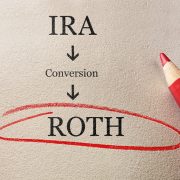Self-Directed Roth IRAs vs Roth IRAs
When you hear about retirement investing, there’s a good chance you’ll hear about Roth IRAs. These tax-advantaged retirement investing accounts are powerful ways to put money aside for retirement because they allow the investor to use after-tax money that grows tax-free. Upon making valid retirement investments over the years and entering retirement age, the investor is then able to take tax-free distributions from these accounts. For that reason, many people advocate using Roth IRAs as part of a retirement investing strategy.
However, you may also find that you encounter two “types” of Roth IRAs: Roth IRAs established the traditional way, and Self-Directed Roth IRAs. What’s going on here? Are they two separate accounts, or what does it mean? Here’s what you’ll need to know about Self-Directed Roth IRAs vs. Roth IRAs.
Self-Directed Roth IRAs: The Summary
The first thing to know about Self-Directed Roth IRAs is that they are not unique accounts. Instead, they are simply Roth IRAs. What separates them from the traditional way of investing in Roth IRAs is that you’ll work with a Self-Directed IRA custodian who will handle the administration of the account. You can then work with this custodian to handle buying and selling within the account, which makes it possible for you to access a wider range of potential investments inside the Roth IRA. For example, you could potentially invest in precious metals within a Roth IRA, provided that you work with a Self-Directed IRA custodian who offers this service.
In this situation, you are not working with a Roth IRA financial advisor, or someone telling you how to invest the money. Instead, you’re taking control. You’re “self-directing” while working with an administrator on the account. The custodian’s role is limited to handling administrative and paperwork duties on the account, not telling you how or where to invest the money within the Roth IRA.
What a Standard Roth IRA Arrangement Looks Like
Why does this require explanation? Because as it turns out, a Roth IRA handled the standard way typically means you’re working with a large brokerage with the account. And these brokerages typically offer stock funds and mutual funds for the Roth IRA, not being able to serve as custodian for other investments like real estate and precious metals. For this reason, many traditional arrangements for this style of investing typically mean you’re investing in stocks and stock funds—the investments to which the brokerage limits its investors.
This arrangement can be beneficial, and we’re not telling you that you have to embrace one or the other. In fact, it can be possible for an investor to use different Roth IRAs with different administrators. However, it’s important for these investors to remember that doubling up on Roth IRAs does not expand the contribution limits for these Roth IRAs, as the government limits contributions across all Roth IRAs to the same amount. For that reason, many people typically only use one Roth IRA, as there are few advantages to splitting up Roth IRAs in this manner, depending on individual situations.
A Self-Directed Roth IRA can mean unlocking a lot of retirement investing potential in a portfolio, but it does require seeking out a great Self-Directed IRA administration firm that can handle this investing potential. That’s why so many Self-Directed Roth IRA investors look for administration firms with experience in a wide range of investing asset classes.
Interested in learning more about Self-Directed IRAs? Contact American IRA, LLC at 866-7500-IRA (472) for a free consultation. Download our free guides or visit us online at www.AmericanIRA.com.









